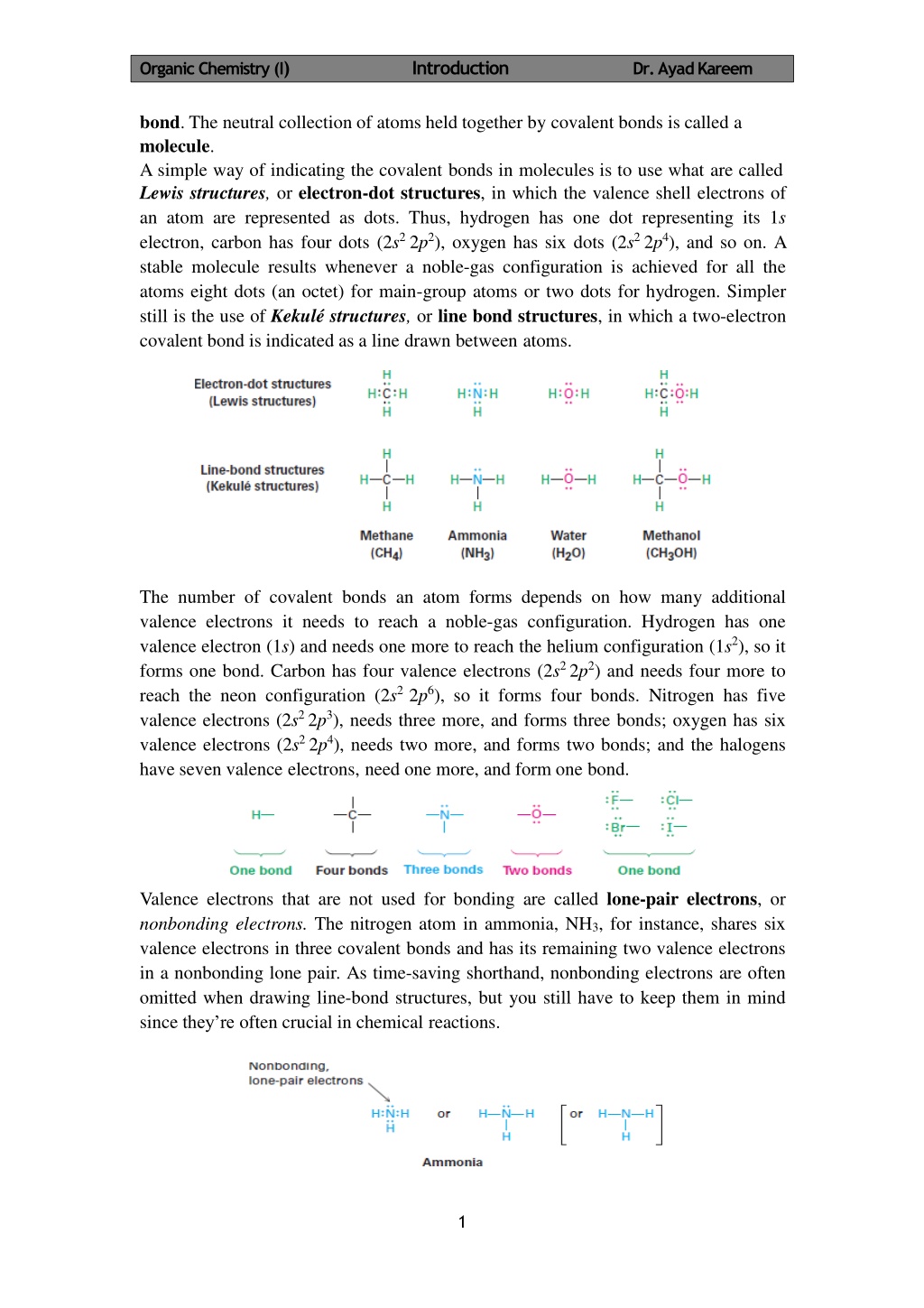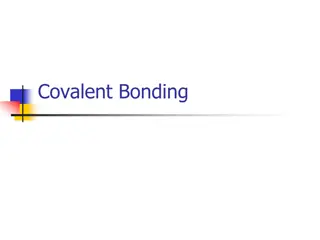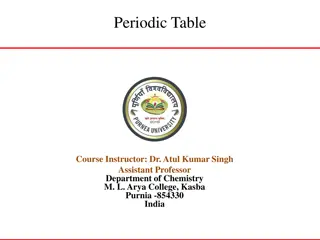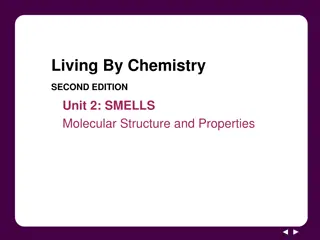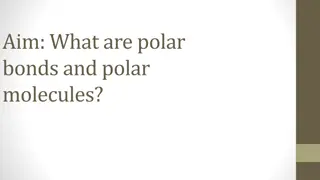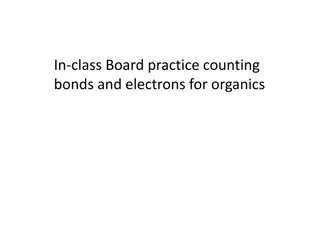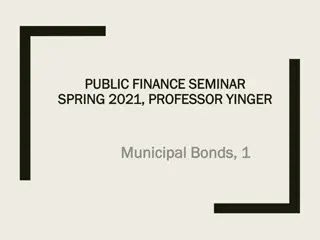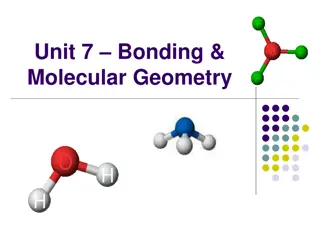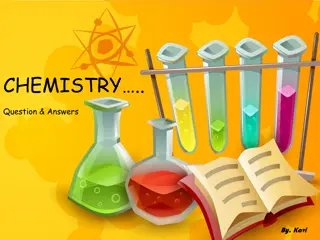Understanding Covalent Bonds and Molecular Structure in Organic Chemistry
The neutral collection of atoms in molecules held together by covalent bonds is crucial in organic chemistry. Various structures like Lewis and Kekulé help represent bond formations. The concept of hybridization explains how carbon forms tetrahedral bonds in molecules like methane. SP3 hybrid orbitals, formed by a combination of s and p orbitals, play a vital role in creating strong bonds. These hybrid orbitals have asymmetry, allowing effective overlap with other atoms. Understanding these principles is fundamental in comprehending molecular structures in organic chemistry.
Download Presentation

Please find below an Image/Link to download the presentation.
The content on the website is provided AS IS for your information and personal use only. It may not be sold, licensed, or shared on other websites without obtaining consent from the author. Download presentation by click this link. If you encounter any issues during the download, it is possible that the publisher has removed the file from their server.
E N D
Presentation Transcript
OrganicChemistry (I) Introduction Dr. AyadKareem bond. The neutral collection of atoms held together by covalent bonds is called a molecule. A simple way of indicating the covalent bonds in molecules is to use what are called Lewis structures, or electron-dot structures, in which the valence shell electrons of an atom are represented as dots. Thus, hydrogen has one dot representing its 1s electron, carbon has four dots (2s22p2), oxygen has six dots (2s22p4), and so on. A stable molecule results whenever a noble-gas configuration is achieved for all the atoms eight dots (an octet) for main-group atoms or two dots for hydrogen. Simpler still is the use of Kekul structures, or line bond structures, in which a two-electron covalent bond is indicated as a line drawn between atoms. The number of covalent bonds an atom forms depends on how many additional valence electrons it needs to reach a noble-gas configuration. Hydrogen has one valence electron (1s) and needs one more to reach the helium configuration (1s2), so it forms one bond. Carbon has four valence electrons (2s22p2) and needs four more to reach the neon configuration (2s22p6), so it forms four bonds. Nitrogen has five valence electrons (2s22p3), needs three more, and forms three bonds; oxygen has six valence electrons (2s22p4), needs two more, and forms two bonds; and the halogens have seven valence electrons, need one more, and form one bond. Valence electrons that are not used for bonding are called lone-pair electrons, or nonbonding electrons. The nitrogen atom in ammonia, NH3, for instance, shares six valence electrons in three covalent bonds and has its remaining two valence electrons in a nonbonding lone pair. As time-saving shorthand, nonbonding electrons are often omitted when drawing line-bond structures, but you still have to keep them in mind since they re often crucial in chemical reactions. 1
OrganicChemistry (I) Introduction Dr. AyadKareem sp3Hybrid Orbitals and the Structure of Methane The bonding in the hydrogen molecule is fairly straightforward, but the situation is more complicated in organic molecules with tetravalent carbon atoms. Take methane, CH4, for instance. Carbon has four valence electrons (2s22p2) and forms four bonds. Because carbon uses two kinds of orbitals for bonding, 2s and 2p, we might expect methane to have two kinds of C-H bonds. In fact, though, all four C-H bonds in methane are identical and are spatially oriented toward the corners of a regular tetrahedron (Figure 1-6). Linus Pauling, who showed mathematically how an s orbital and three p orbitals on an atom can combine, or hybridize, to form four equivalent atomic orbitals with tetrahedral orientation. Shown in Figure 1-10, these tetrahedrally oriented orbitals are called sp3hybrid orbitals. Note that the superscript 3 in the name sp3tells how many of each type of atomic orbital combine to form the hybrid, not how many electrons occupy it. Figure 1-10 Four sp3 hybrid orbitals, oriented to the corners of a regular tetrahedron, are formed by the combination of an s orbital and three p orbitals (red/blue). The sp3 hybrids have two lobes and are unsymmetrical about the nucleus, giving them a directionality and allowing them to form strong bonds when they overlap an orbital from anotheratom. The concept of hybridization explains how carbon forms four equivalent tetrahedral bonds but not why it does so. The shape of the hybrid orbital suggests the answer. When an s orbital hybridizes with three p orbitals, the resultant sp3 hybrid orbitals are unsymmetrical about the nucleus. One of the two lobes is larger than the other and can therefore overlap more effectively with an orbital from another atom to form a bond. As a result, sp3 hybrid orbitals form stronger bonds than do unhybridized s or p orbitals. The asymmetry of sp3 orbitals arises because, as noted previously, the two lobes of a p orbital have different algebraic signs, 1 and 2, in the wave function. Thus, when a p orbital hybridizes with an s orbital, the positive p lobe adds to the s orbital but the negative p lobe subtracts from the s orbital. The resultant hybrid orbital is therefore unsymmetrical about the nucleus and is strongly oriented in one direction. When each of the four identical sp3 hybrid orbitals of a carbon atom overlaps with the 1s orbital of a hydrogen atom, four identical C-H bonds are formed and methane results. Each C-H bond in methane has a strength of 439 kJ/mol (105 kcal/mol) and a length of 109 pm. Because the four bonds have a specific geometry, we also can define a property 2
OrganicChemistry (I) Introduction Dr. AyadKareem called the bond angle. The angle formed by each H-C-H is 109.5 , the so-called tetrahedral angle. Methane thus has the structure shown in Figure 1-11. Figure 1-11 The structure of methane, showing its 109.5 bond angles. Drawing Chemical Structures In the structures we ve been drawing until now, a line between atoms has represented the two electrons in a covalent bond. Drawing every bond and every atom is tedious, however, so chemists have devised several shorthand ways for writing structures. In condensed structures, carbon hydrogen and carbon carbon single bonds aren t shown; instead, they re understood. If a carbon has three hydrogens bonded to it, we write CH3; if a carbon has two hydrogens bonded to it, we write CH2; and so on. The compound called 2-methylbutane, for example, is written as follows: Notice that the horizontal bonds between carbons aren t shown in condensed structures the CH3, CH2, and CH units are simply placed next to each other-but the vertical carbon-carbon bond in the first of the condensed structures drawn above is shown for clarity. Also, notice that in the second of the condensed structures the two CH3units attached to the CH carbon are grouped together as (CH3)2. Even simpler than condensed structures are skeletal structures such as those shown in Table 1-3. The rules for drawing skeletal structures are straightforward. Rule 1 Carbon atoms aren t usually shown. Instead, a carbon atom is assumed to be at each intersection of two lines (bonds) and at the end of each line. Occasionally, a carbon atom might be indicated for emphasis or clarity. Rule 2 Hydrogen atoms bonded to carbon aren t shown. Because carbon always has a valence of 4, we mentally supply the correct number of hydrogen atoms for each carbon. 3
OrganicChemistry (I) Introduction Dr. AyadKareem Rule 3 Atoms other than carbon and hydrogen are shown. One further comment: although such groupings as -CH3, -OH, and -NH2 are usually written with the C, O, or N atom first and the H atom second, the order of writing is sometimes inverted to H3C- , HO- , and H2N- if needed to make the bonding connections in a molecule clearer. Larger units such as -CH2CH3are not inverted, though; we don t write H3CH2C- because it would be confusing. There are, however, no well-defined rules that cover all cases; it s largely a matter of preference. 4
